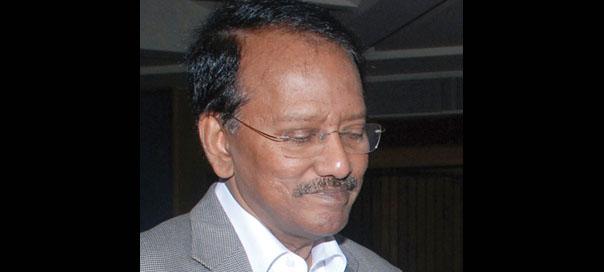BY MOSES MANOHARAN
A frequent complaint of people visiting India from other parts of the world is the wordiness of our TV news channel anchors. The anchors seem to forget or ignore or are ignorant of the fact that television is primarily a visual medium.
The common feature of the news channels is the hours focused on anchors, presenters and such like -- known in industry parlance as talking heads -- who monopolize the screen, to the extent that even guests invited to the programmes because of their expertise are marginalized.
Presumably to enhance the aura of the anchor, TV channels open up six to eight windows for other talking heads to appear, argue and drown the proceedings in pandemonium. Outside of India, no serious channel on the planet would think of having so many people on screen at the same time.
The viewer, it is accepted across the world, cannot absorb so many talking heads at the same time. Yet, in India, it is the norm, with the talking heads scowling, abusing, grandstanding or refusing others the floor, all part of a day’s prime time news telecast. It raises the very real possibility that the news telecast is not to inform, but to entertain in order to compete with serials and so-called reality shows for viewership. The windows that put on national display political leaders, activists and celebrities squabbling over various issues has reduced the news broadcasts to a tamasha. Amidst the unedifying debate that rages on screen, the anchor becomes ringmaster, empowered to switch off the panelists on screen, then rebut, reject, condemn, lecture or just harangue the public on just about any issue, in the daily circus of the absurd.
The more talking heads, of course, means less stress on finances. It is again well known in the industry that having visual reportage means more expenses run up by crews travelling out to newsworthy spots and more edit work back in the studio before it can be telecast.
Far less expensive and easy to produce are the live reality shows, with multiple satellite link-ups to the panelists outside the studio. In the process, what is sacrificed is television’s strongest point over print and radio, video footage that accurately documents what transpired. Instead, Indian viewers are treated to a daily dose of intemperate opinions of overbearing anchors, bad tempered or ill mannered panelists and very little of authentic, unbiased news.
The dumbing down of news on television threatens to not just thwart genuine information being disseminated to the public, but actually hinder government responses to external and internal challenges to societal values such as equity, affirmative action and good neighbourliness with bordering nations. The raucous tamasha that is sought to be passed off every night as news broadcasts have time and again attempted, on the spurious premise of being what Indians demand to know, to stampede the legislature and even the judiciary into going against due processes and constitutional norms. The anchors pick particularly emotive issues like the recent brutal rape and murder of a young woman in New Delhi to press for extreme measures such as the death penalty for rapists or to push India into armed confrontation with Pakistan over the mutilation of soldiers at the border. Another feature of this news tamasha is the arbitrariness with which a subject and its protagonist is selected, promoted or trashed relentlessly, until one fateful day when he or she is sent into oblivion. An example is the anti corruption campaigner Arvind Kejriwal, who was in many ways a creation of the media. He has now all but disappeared from the daily news circus circuit, coincidentally after he levelled corruption charges
against the captains of industry, who also owned or invested in many big news channels. With him, went much of the 24x7, breathless coverage of other campaigners against corruption -- Anna Hazare and Baba Ramdev. The new darling of the media is Gujarat Chief Minister Narendra Modi, whose speech at a local Delhi commerce college was telecast live and then analysed threadbare by the rambunctious and ubiquitous panelists.
Rahul Gandhi, the Nehru dynasty’s latest scion, must surely have felt a pang watching Modi getting wall to wall coverage. He too was once the focus of a gushing media, that has now moved on, but he can take solace from the fact that the same media will seek new heroes and villains soon enough. The arbitrariness, indeed often irresponsibility with which television often promotes causes harmful to harmony in society, all point to an immature electronic media in India. Flipping through the channels, any viewer can see and sense the seriousness, even reverence, with which news is dealt with by TV stations from Germany to south Korea, from the BBC to Al Jazeera. Not for them the gimmicky camera work, the overbearing anchors, the blatant campaigning for causes. Traditional values of news dissemination, objectivity being prime among them, dominate the way news is presented across the world. It is about time we followed suit.























